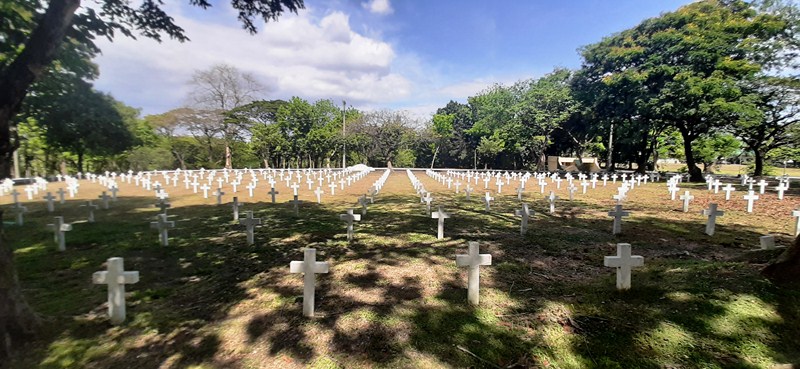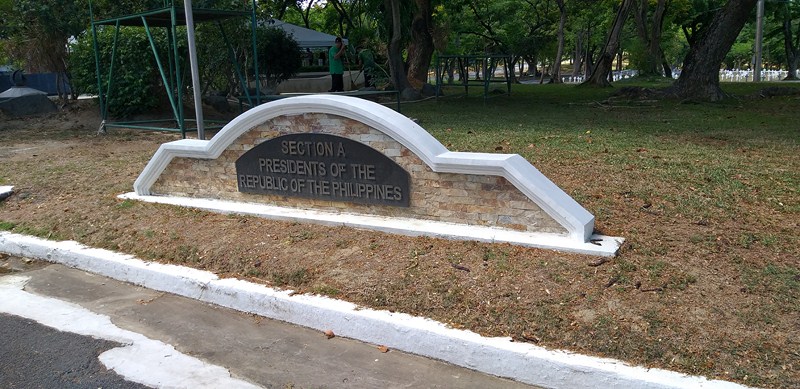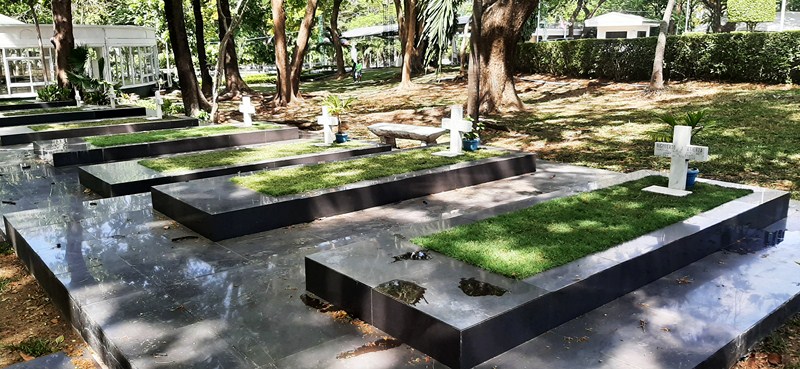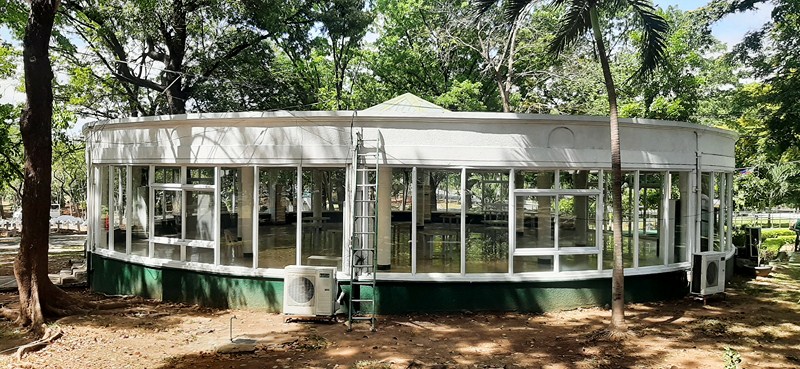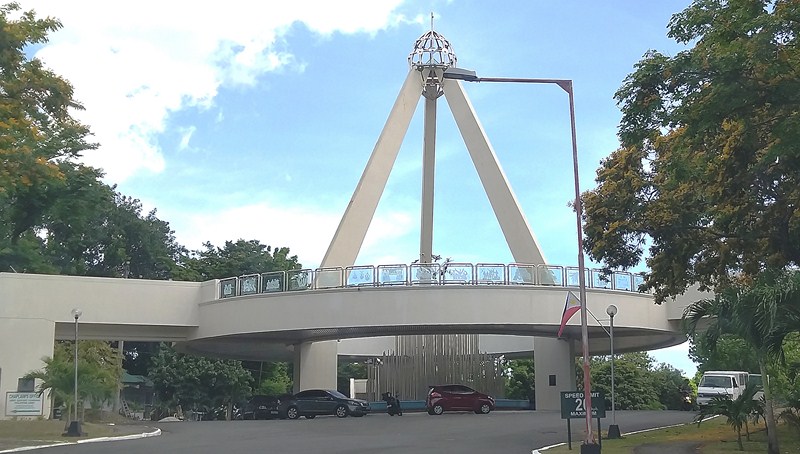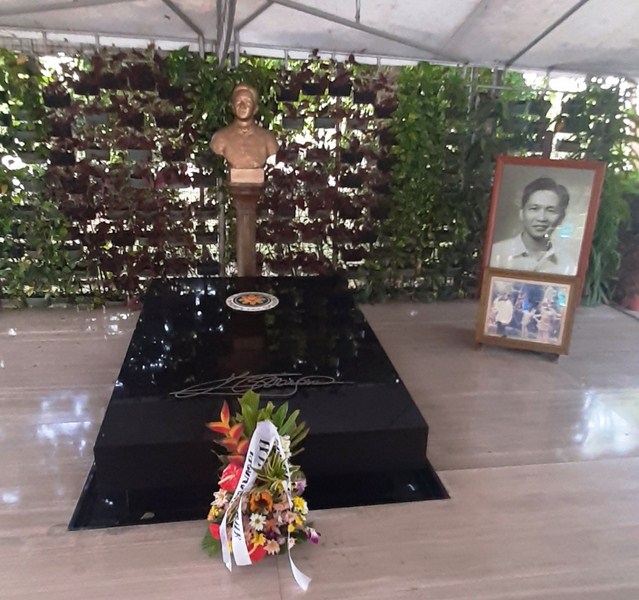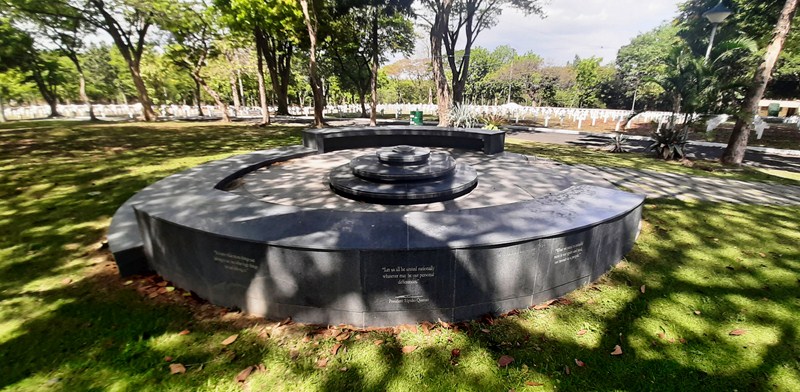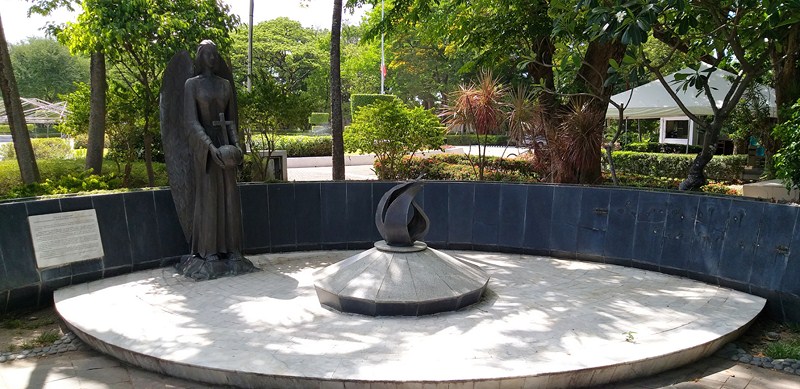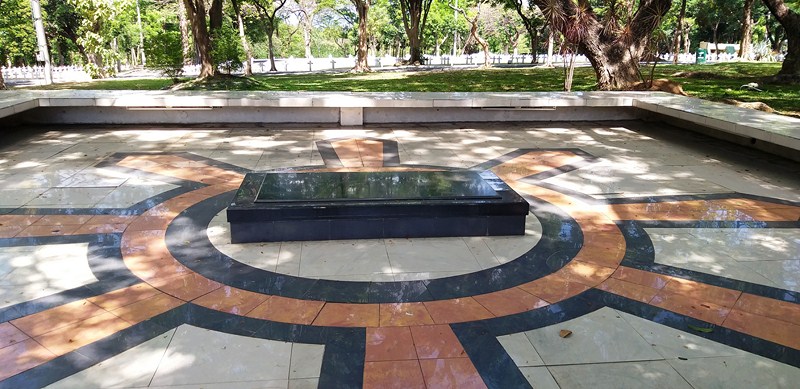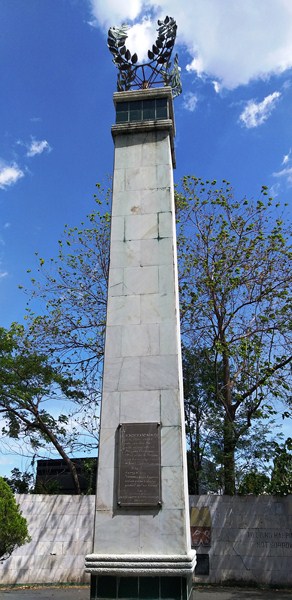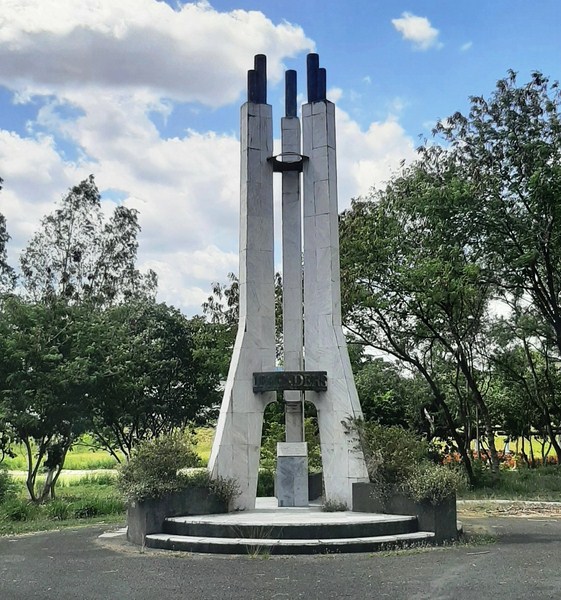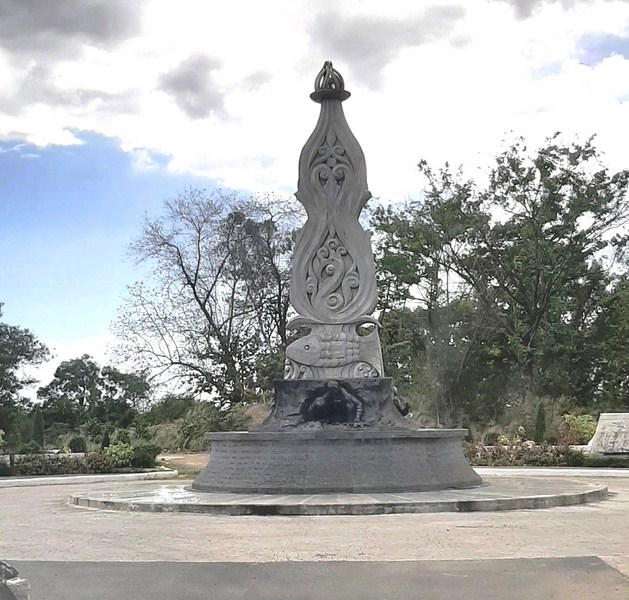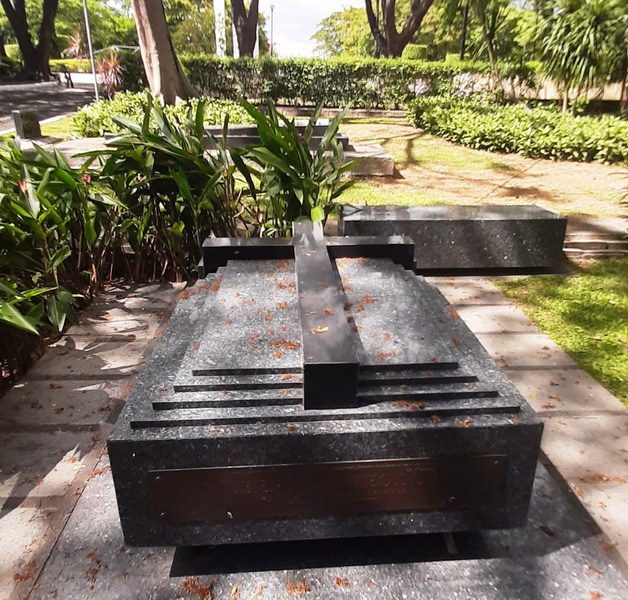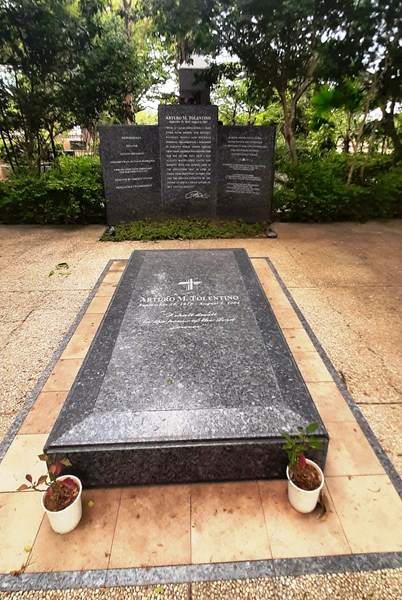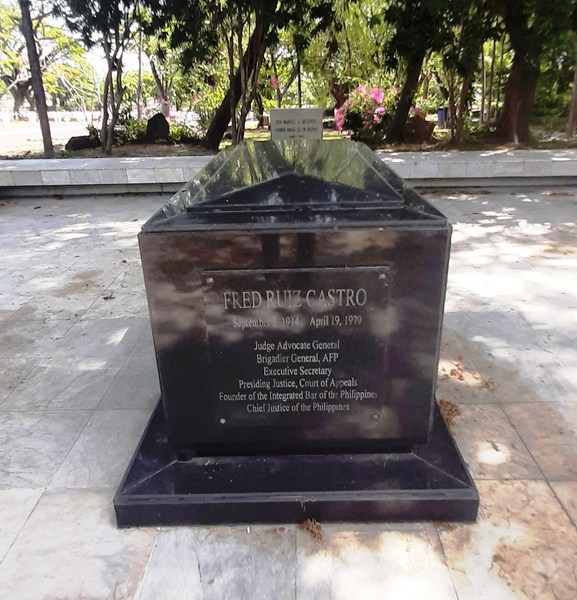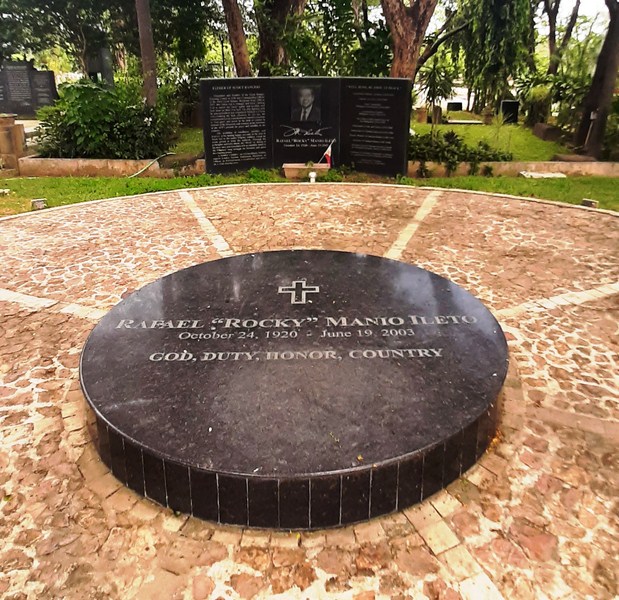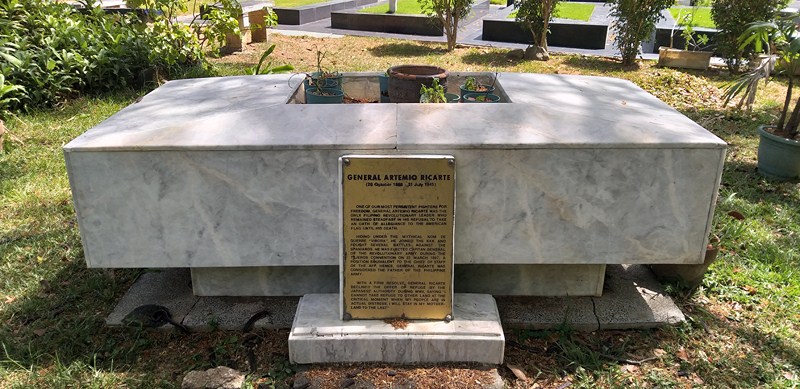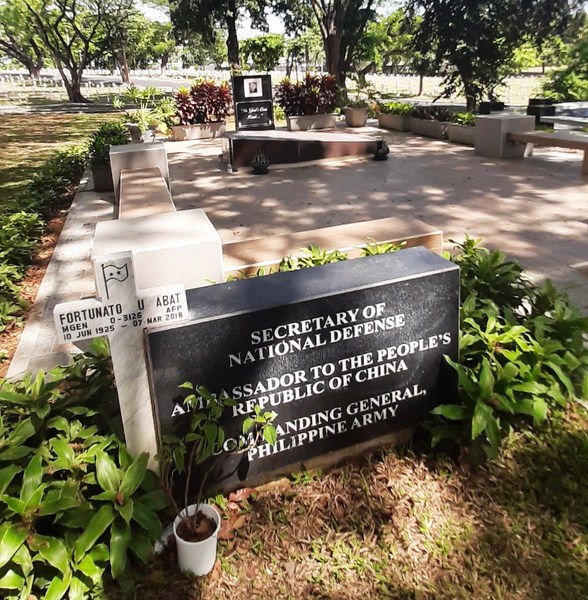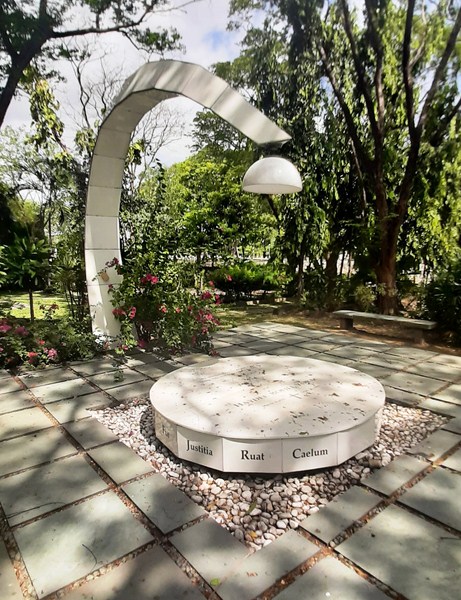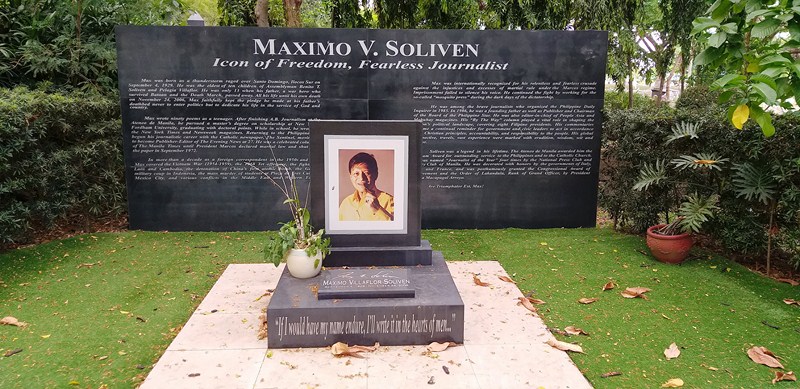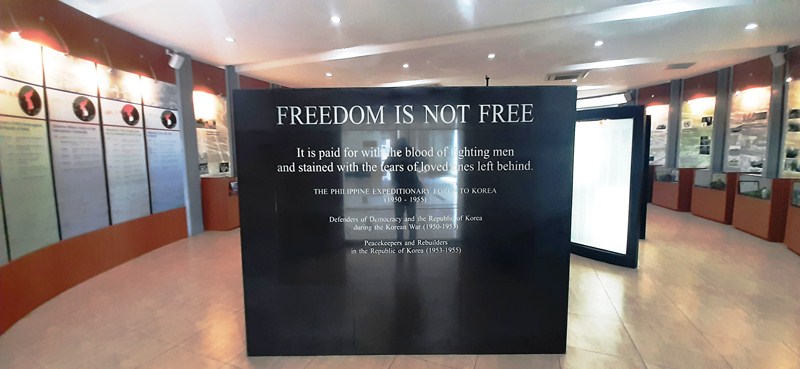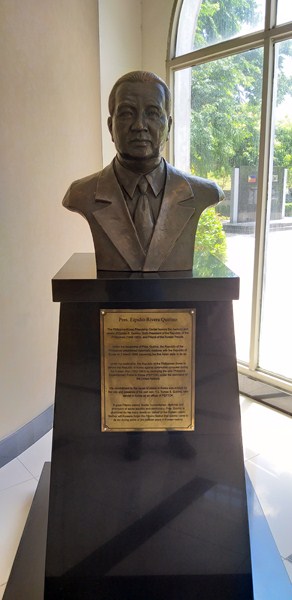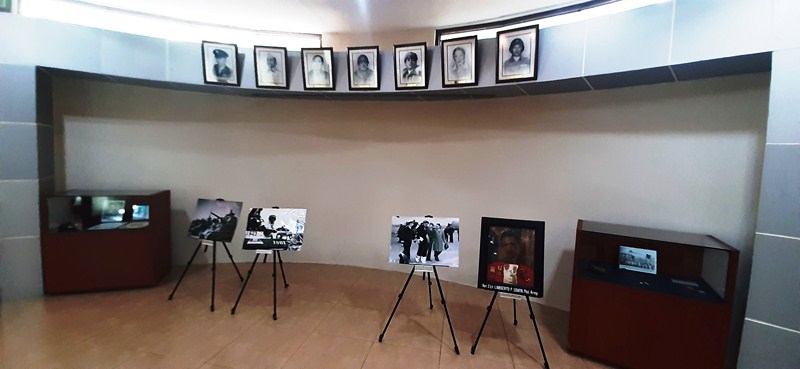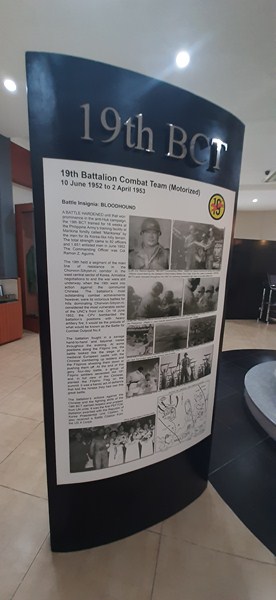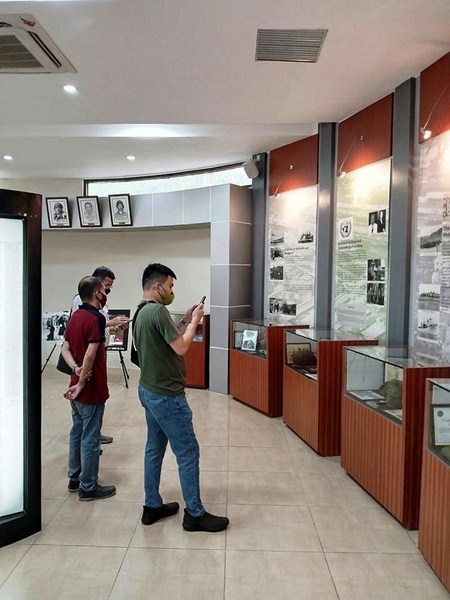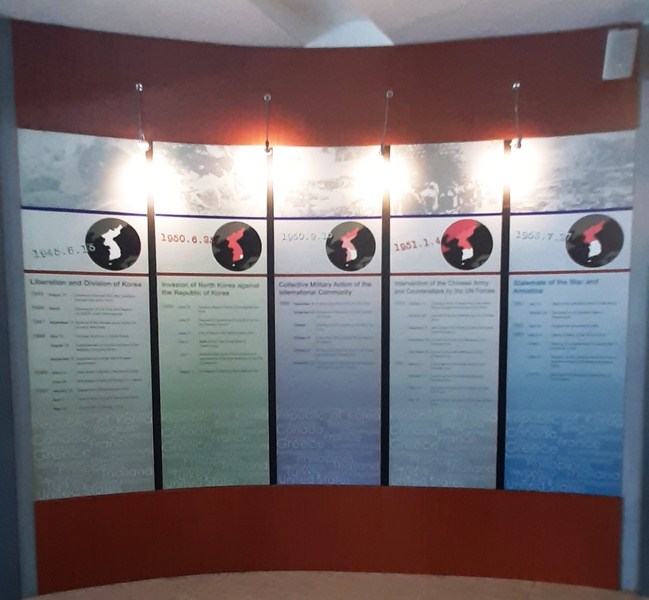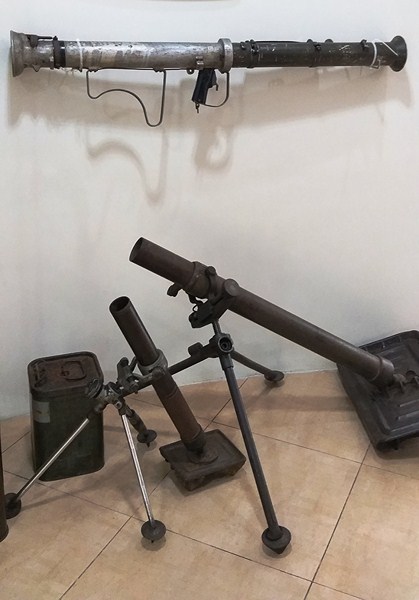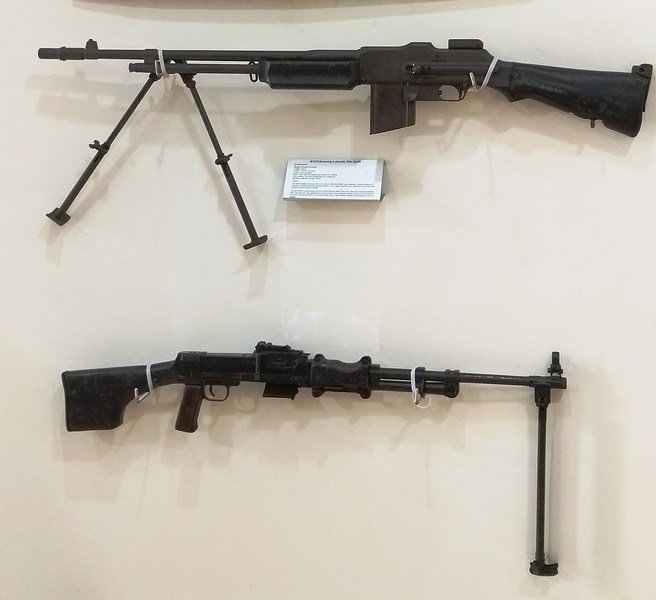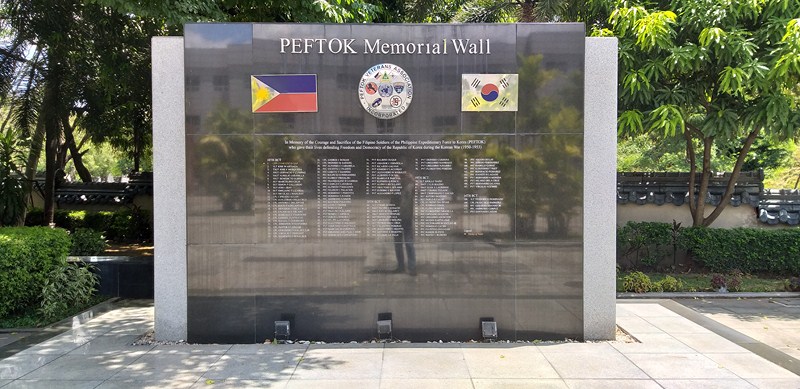The 103-hectare Libingan ng mga Bayani (LNMB, translated as “Heroes Cemetery”), the final resting place of more than 49,000 deceased Filipino soldiers, statesmen, heroes, and martyrs, is a national cemetery within Fort Bonifacio (formerly Fort William McKinley).
Formerly the Republic Memorial Cemetery, it was first established in May 1947 as a tribute and final resting place for the 33,520 to 58,780 Filipino soldiers who died during the Philippine Campaign (1941–42) and the Allied Liberation of the Philippines (1944–45) in World War II. The cemetery is the Filipino counterpart to the Manila American Cemetery and Memorial, which houses the remains of United States personnel who died during the same war.
On June 16, 1948, Republic Act 289 (also known as An Act Providing for the Construction of a National Pantheon for Presidents of the Philippines, National Heroes, and Patriots of the Country) was signed into law by Philippine President Elpidio Quirino.
On October 27, 1954, President Ramon Magsaysay renamed the Republic Memorial Cemetery as the Libingan ng mga Bayani. On May 28, 1967, Presidential Proclamation No. 208 was issued by President Ferdinand Marcos who ordered the reservation of 142 hectares of land within Fort Bonifacio Military Reserve in consideration for the Libingan ng mga Bayani to serve, not only as a cemetery for Philippine military personnel, but also as a national shrine for fallen heroes. Marcos also ordered it placed under the administration of the Military Shrines Services of the Philippine Veterans Affairs Office, an agency under the Department of National Defense.
On April 9, 1986, President Corazon Aquino and Armed Forces of the Philippines Chief of Staff Fidel V. Ramos issued Armed Forces Regulations G 161-373. This military-issued regulation, also known as “The allocation of Cemetery Plots at the LNMB,” established the interment policy that would become the basis for the burial of personalities at the Libingan ng mga Bayani.
On October 26, 1993, President Fidel V. Ramos issued Executive Order No. 131 making National Artists and National Scientists of the Philippines eligible for interment at the cemetery.
In 2007, due to overcrowding at the Fort Bonifacio site, the cemetery’s administration started exploring sites for Libingan ng mga Bayani annexes in Luzon, Visayas and Mindanao. The ₱24-million, five-hectare extension at Camp Hernandez in Dingle, Iloilo was the only one completed so far.
On January 4, 2019, Secretary of National Defense Delfin Lorenzana approved a five-year development program for the cemetery (projected to cost about ₱3.3 billion) whose goal is to rehabilitate and transform the LNMB into a world-class national cemetery at par with the nearby Manila American Cemetery. The first phase of the program, to be implemented by the Bases Conversion and Development Authority, includes the construction of a dignified cemetery area, a historical theme park, and a memorial shrine.
On November 18, 2016, amid much controversy resulting in a handful of protests in various parts of the Philippines, former president Ferdinand Marcos was buried in a private ceremony with military honors after the Supreme Court of the Philippines dismissed petitions against his burial on 8 November 2016.
Today, the cemetery is administered and maintained by the Grave Service Unit (GSU), a unit of the Philippine Army Support Command of the AFP. Their mission is:
- to provide burial and niche services to deceased military personnel and other personalities interred at the cemetery
- to maintain the cemetery and the military grave site at Manila North Cemetery
- provide mortuary and memorial services to authorized personnel
According to Armed Forces of the Philippines (AFP) Regulation G 161-373 and based on the The Allocation of Cemetery Plots at the Libingan ng mga Bayani, the following persons are entitled to interment at the Libingan ng mga Bayani:
- Medal of Valor awardees
- Presidents or Commanders-in-Chief, AFP
- The secretaries of National Defense
- AFP Chiefs of Staff
- Generals/Flag Officers of the AFP
- Active and retired military personnel of the AFP (including active draftees and trainees who died in line of duty, and active reservists and CAFGU Active Auxiliary who died in combat-related activities)
- Justices of the Supreme Court and Court of Appeals
- Senators and Senate President
- Former AFP members who laterally entered/joined the Philippine National Police (PNP) and the Philippine Coast Guard (PCG)
- Veterans of the Philippine Revolution of 1896, the First and Second World Wars, as well as recognized guerrillas
- Government dignitaries, statesmen and other deceased persons whose interment has been approved by the commander-in-chief, Congress or the Secretary of National Defense
- Former Presidents and widows of former Presidents and Chiefs of Staff
- National Artists and National Scientists of the Philippines
However, the same regulation also says that the prohibition of interment applies to “personnel who were dishonorably separated/ reverted/ discharged from the service and personnel who were convicted by final judgment of an offense involving moral turpitude” from interment at the Libingan ng mga Bayani.
When we visited, the first structure we saw upon entering the grounds of the cemetery complex was the Heroes Memorial Gate. This large concrete tripod, with a stairway leading to an upper view deck, has a metal sculpture at the center.
Near the Heroes Memorial Gate and erected on opposite sides of the main entrance road are two 12-ft. high black stone walls. They bear the words that General Douglas MacArthur uttered during a journey to the Philippines in 1961: “I do not know the dignity of his birth, but I do know the glory of his death.”
The Tomb of the Unknown Soldier, the main structure at the center of the cemetery, is where wreath laying ceremonies are held when Philippine government officials and foreign dignitaries visit the cemetery. The tomb is inscribed with the words: “Here lies a Filipino soldier whose name is known only to God.” Three marble pillars, behind the tomb, represent the three main island groups in the Philippines: Luzon, Visayas and Mindanao.
Around the cemetery are a number of pylons commemorating the gallantry of Filipino soldiers who died in various wars in world history. The Korean Memorial Pylon honors the 112 Filipino officers and men who were members of the Philippine Expeditionary Forces to Korea (PEFTOK) who perished during the Korean War.
The Vietnam War Veterans Memorial Pylon is dedicated to the members of the Philippine contingent and Philippine civic action groups (PHILCON-V and PHILCAG-V) who were sent to Vietnam during the Vietnam War from 1964 to 1971
The Philippine World War II Guerrillas Pylon, erected by the Veterans Federation of the Philippines, serves as “a testimony to the indomitable spirit and bravery of the Filipino guerrillas of World War II who refused to be cowed into submission and carried on the fight for freedom against an enemy with vastly superior arms and under almost insurmountable odds.”
The Defenders of Bataan and Corregidor Memorial was erected in 1977 in memory of those who served during World War II.
The Marawi Heroes Memorial (Marawi Pylon) honors the 165 soldiers who died during the Marawi Siege, a five-month long battle between government forces and Islamic State-inspired terrorists.
There are 46 allocated grave sites for presidents. The presidents buried here are Elpidio Quirino (1890–1956), the 6th President; Carlos P. Garcia (1896–1971), the 8th President; Diosdado Macapagal (1910–1997), the 9th President; and Ferdinand Marcos (1917–1989), the 10th President.
There are also 94 plots allotted for secretaries of national defense, government dignitaries, and statesmen. They include:
- Vice President Salvador H. Laurel (1928–2004), the 10th Vice President
- Carlos P. Romulo (1898–1985), former Minister of Foreign Affairs and President of the United Nations General Assembly
- Arturo Tolentino (1910–2004), former Secretary of Foreign Affairs and Senator
- Blas Ople (1927–2003), Secretary of Foreign Affairs and Senator
- Fred Ruiz Castro, (1914–1979), 12th Chief Justice of the Supreme Court of the Philippines
- Enrique Fernando, (1915–2004), 13th Chief Justice of the Supreme Court of the Philippines
- Claudio Teehankee, Sr.(1918–1989), 16th Chief Justice of the Supreme Court of the Philippines
Secretaries of National Defense buried here include Fortunato Abat (1925–2018), Rafael Ileto (1920–2003), Alejo Santos (1911–1984) and Ernesto S. Mata (1915–2012).
One hundred thirty-three slots are allotted for the Armed Forces of the Philippines (AFP) chiefs of staff. Buried here are:
- Artemio Ricarte (1866–1945), Philippine Revolutionary Army Chief of Staff
- Alfredo M. Santos (1905–1990), 11th Chief of Staff
- Arturo T. Enrile (1940–1998), 24th Chief of Staff
- Angelo T. Reyes (1945–2011), 28th Chief of Staff.
Some 1,375 slots are allotted for National Artists and National Scientists of the Philippines. Buried here are
- Encarnacion Alzona (1895–2001), pioneering Filipino historian, educator and suffragist. The first Filipino woman to obtain a Ph.D., and she was conferred in 1985 the rank and title of National Scientist of the Philippines for Philippine History.
- Eduardo Quisumbing (1895–1986), National Scientist of the Philippines for Plant Taxonomy, Systematics, and Morphology
- Gelia T. Castillo (1928–2017), National Scientist of the Philippines for Rural Sociology
- Juan Salcedo, Jr. (1904 – 1988), National Scientist of the Philippines for Nutrition and Public Health
- Francisco Fronda (1896 – 1986), National Scientist of the Philippines
- Geminiano de Ocampo (1914 – 1987), National Scientist of the Philippines
- Hilario Lara (1894 – 1987), National Scientist of the Philippines for Public Health
- Julian A. Banzon (1908 – 1988), National Scientist of the Philippines for Chemistry
- Gregorio Velasquez (1901 – 1989), National Scientist of the Philippines for Phycology
- Jose Encarnacion, Jr. (1928 – 1998), National Scientist of the Philippines for Economics
- Alfredo C. Santos (1900 – 1990), National Scientist of the Philippines for Physical Chemistry
- Luz Oliveros-Belardo (1906 – 1999), National Scientist of the Philippines for Phytochemistry
- Pedro Escuro (1923 – 2000), National Scientist of the Philippines for Genetics and Plant Breeding
- Perla Santos-Ocampo (1931–2012), a Philippine pediatrician whose studies on malnutrition and child growth and development was instrumental to the country’s fight against child malnutrition. National Scientist of the Philippines for Pediatrics.
- Alfredo Lagmay (1919–2005), a Philippine psychologist whose studies on experimental analysis of behavior modification, relaxation and related states, and hypnosis. National Scientist of the Philippines for Experimental Psychology
- Fe Del Mundo (1911–2011), a Philippine pediatrician whose studies led to the improvement of the neonatal incubator. National Scientist of the Philippines for Pediatrics.
- Guillermo Tolentino (1890–1976), National Artist for Visual Arts
- Vicente Manansala (1910–1981), National Artist for Visual Arts
- Victorio Edades (1895–1985), National Artist for Visual Arts
- Ang Kiukok (1931–2005), National Artist for Visual Arts
- José T. Joya (1931–1995), National Artist for Visual Arts
- Napoleon Abueva (1930–2018), National Artist for Visual Arts
- Cesar Legaspi (1917 – 1994), National Artist for Visual Arts
- Abdulmari Imao (1936–2014), National Artist for Visual Arts
- Francisco Mañosa (1931–2019), National Artist for Architecture
- Ramón Valera (1912–1972), National Artist for Fashion Design
- Leonor Orosa-Goquingco (1917–2005), National Artist for Dance
- Francisca Reyes-Aquino (1899–1983), National Artist for Dance
- Ernani Cuenco (1936–1988), National Artist for Music
- Jovita Fuentes (1894–1980), National Artist for Music
- Antonio J. Molina (1895–1978), National Artist for Music
- Antonino R. Buenaventura (1904–1996), National Artist for Music
- Nick Joaquin(1917–2004), National Artist for Literature
- Levi Celerio (1910 – 2002), National Artist for Literature
- V. M. Gonzalez (1915–1999), National Artist for Literature
- Francisco Arcellana (1916–2002), National Artist for Literature
- F. Sionil Jose (1924–2022), National Artist for Literature
- Alejandro Roces (1924–2011), National Artist for Literature, former chairman of Movie and Television Review and Classification Board and Secretary of Education
- Carlos Quirino (1910–1999), National Artist for Historical Literature
- Wilfrido Ma. Guerrero (1911–1995), National Artist for Theater
- Gerardo de León (1913–1981), National Artist for Film and Broadcast Arts
- Eddie Romero (1924–2013), National Artist for Film and Broadcast Arts
There are 118 slots allotted for Medal of Valor awardees. They include:
- Jesus A. Villamor (1914–1971), a Filipino American pilot who fought the Japanese in World War II.
- Desiderio Suson
- Rommel Sandoval (1979–2017), Hero of Marawi Siege
- Gen. Godofredo Juliano
- Conrado Yap (1921 – 1951)
- Lolina To Go-Ang
- 2nd Lt. Jose Bandong, Jr.
- Robert Eduardo Lucero
183 slots for other generals and flag officers, 5,334 slots for World War II veterans and the remaining grave sites are designated for retired AFP personnel and veterans. Other notable persons buried here include:
- Teodoro Locsín Sr.(1914–2000), Philippine Free Press co-founder, journalist and father of former Congressman and current Secretary of Foreign Affairs Teodoro Locsin Jr.
- Max Soliven (1929–2006), The Philippine Star journalist and co-founder
- Haydee Yorac (1941–2005), Chairperson of the Presidential Commission on Good Government
- Gilberto Teodoro Sr.(1927–2008), former administrator of Social Security System and father of former Defense Secretary Gilberto Teodoro Jr.
Libingan ng mga Bayani: Bayani Rd., Fort Bonifacio, Taguig City 1630, Metro Manila, Coordinates 14.520°N 121.044°E.


